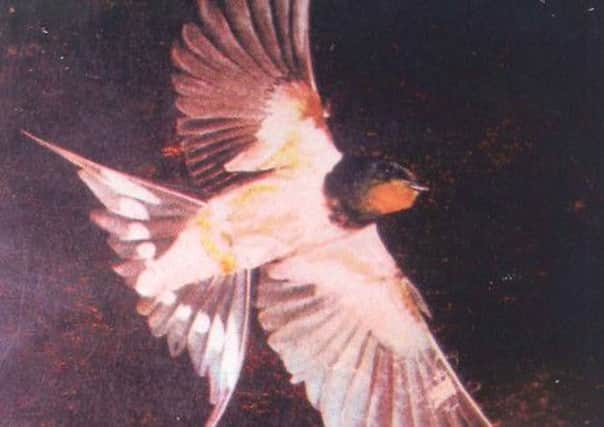RICHARD WILLIAMSON: Earliest swallow for a century... or just late home?


What’s going on down there? Did anyone see the immigrant from Africa arrive? Apparently not, for the first sighting was on January 2 when the harbinger of summer was already busy in the sewage works at Newick, east of Horsham.
Nor did anyone spot the Earnley bird crossing the Selsey shingle bank into the Manhood peninsula when it was later seen near Ham Farm at Earnley.
Advertisement
Hide AdAdvertisement
Hide AdIt was catching male gnats dancing their early nuptials in the winter sunshine.
One swallow does not make a summer, but has this ever been known before, that is, swallows in midwinter?
Well yes it has, 120 years ago. It was in 1894 that a few birds were seen loitering around Fishbourne, Bognor, Arundel and Chichester almost up to Christmas Day.
Question is, were they coming or going? Were they trying to make up their minds to make that awful crossing of the Sahara to the safety of South Africa with its reedy swamps or had they crossed it twice and were arriving back again? Almost certainly not.
Advertisement
Hide AdAdvertisement
Hide AdThey had never been anywhere. So presumably the two January swallows this year are both stay-at-homes thinking of last summer, not the coming one.
In his book The Birds of Sussex published in 1979, the late Michael Shrubb, who was a farmer at Sidlesham, stated that swallows have been seen in the county every month except January.
So that has had to change. I have not yet seen his updated Birds of Sussex published by the BTO this week, price £35, which will give the latest on swallow arrivals post-1979.
Winter swallows have intrigued people for centuries and given rise to some extraordinary reports, or should we say, stories.
Advertisement
Hide AdAdvertisement
Hide AdGilbert White was himself wondering whether swallows sank deep into lakes in a torpor of hibernation which made breathing unnecessary. Then there is the very strange case of the Hastings swallows which has never been fully explained.
This occurred in 1834 or 1835 and was reported in The Zoological Transactions for 1849.
A certain Mr Joyce, superintendent of an excavation at East Hill, Hastings, found in the deep crevices of the cliff many dead swallows which were in a state of perfect preservation, without sign of decay.
There were so many of them that large railway barrows were brought along and three loads removed. Forty or 50 workmen witnessed the find and four were prepared to be named as witnesses.
Advertisement
Hide AdAdvertisement
Hide AdStories get about, whether they are fact or fiction. At about the same time as the above, a great number of swallows were apparently dredged up in a Russian lake and to the amazement of the whole town, the torpid birds gradually woke up when brought into the warmth and flew about close to the ceiling, then, being released, went their way.
There are reports that scores of persons in the area were prepared to swear affidavits as witnesses to this amazing event.
We mustn’t forget that people’s mindsets were different from ours. Who today would use 50 baby swallows crushed alive in a pestle and mortar, mixed with one ounce of castor oil and some white vinegar, and use as a cure for lethargy, epilepsy, lack of passion, and all disorders of the head?
Mistress Jane Hussey did in her Still-Room Book of 1692. They did things differently then, and many of their beliefs are absurd to us today.